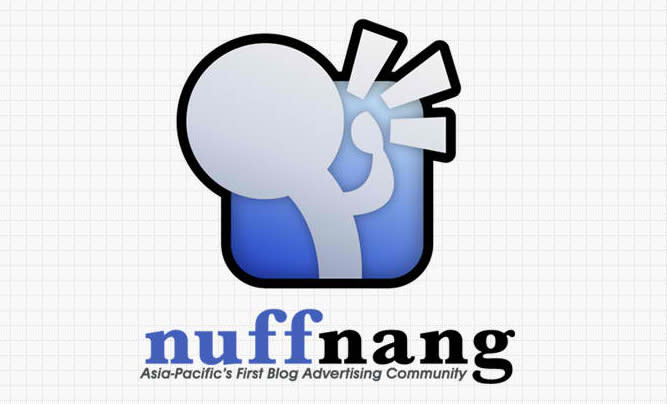The Nuffnang Founders' Story

Most bloggers in Southeast Asia will have heard of Nuffnang, if they are not already using it. To date, it is arguably the largest blog ad network in Southeast Asia, delivering a whopping 13 million page-views per day.
The founding story of Nuffnang is an interesting one that I took some time to dig into with co-founder Timothy Tiah. The story starts in 2006, when Timothy and fellow co-founder Cheo Ming Shen were students in the UK. Both became friends at a Pussycat Dolls concert (yes, you read that right). But it was only through a group date with two other ladies that they explored entrepreneurship and possibly working together. Instead of getting the ladies’ numbers, Timothy and Ming Shen exchanged their details as they hit it off quickly and while swapping business ideas.
They initially had the idea to build an Amazon for Southeast Asia. But knowing that an e-commerce business requires heavy capital, they didn’t jump straight into it. Instead they thought about building a blog ad network which was relatively capital friendly to get going. Their idea was to monetize through the mass of bloggers out there. Together, the founders coughed up S$65,000 to get the business started. In case you’re wondering, the name Nuffnang stands for “really good” in Jafaikan, a dialect that’s a mix of Jamaican and West African words and accents that can be heard among some immigrants in London.
Nuffnang kicks off
Nuffnang officially kick-started in February 2007 with a modest 20 bloggers using its ad platform. “In the early days, getting bloggers was tough. Some didn’t believe in Nuffnang and just snubbed us,” said Timothy.
He recalls Xiaxue, a prominent Singaporean blogger, as one of the early Nuffnang bloggers. Ming had a lunch meeting with Xiaxue back in 2007, and even though she wasn’t totally convinced by the Nuffnang idea at first, she bought lunch and threw her support behind him. Eventually, she did sign up for Nuffnang. Ming said they felt very thankful and admitted that Xiaxue’s support had a major impact on Nuffnang, one that is still felt today.
Soon after, growth was rapid. In three days, 300 bloggers joined the Nuffnang network. After 30 days, 3,000 bloggers were on board. Its first advertiser was Exabytes, a popular web hosting and domain company in Malaysia who spent 3,000 RM (US$970) on a campaign. Thereafter, more brands followed including SingTel, Nike, Honda, P&G, and Nokia. Timothy explains that back then, they didn’t even know what an insertion order (IO) was. He said:
We were very new to the media buying business. But thankfully our clients educated and helped us along the way.
Saying no to investment and acquisition
Initial success attracted more bloggers on board including popular bloggers like Dawn Yang, Cheeserland, Cowboy Caleb, and Kenny Sia. In the first nine months of business, Timothy said that they didn’t draw much of a paycheck from the company. Most of the earnings were reinvested to help the company grow, thus helping Nuffnang achieve profitability in its first year. Investors were soon knocking on their door.
In January 2008, a serious offer came in from a UK-listed entity who wanted to invest in Nuffnang at a $1.5 million valuation. At around the same period, Singapore Press Holdings (SPH) also showed interest after it acquired Hardware Zone, a popular forum in Singapore. It dawned on Timothy and Ming that SPH could easily build a similar product to compete with Nuffnang. Both founders felt some fear but slept over the problem. One morning they woke up and decided to take the bold move to reject every investment and acquisition offer, opting to focus on building the business. Timothy said:
We felt that dealing with investors and term sheets consumes a lot of time. Time we could use to focus on our product. We were already profitable and we could grow without taking in any investments. Ming and I also believed at the time that Nuffnang being small and nimble was an advantage that could make up for our lack in size.
Investment offers didn’t stop. In 2009, another media company was interested in acquiring Nuffnang. It valued Nuffnang at $7 million based on a 15-times price-to-earnings ratio. The terms included a tie-down which Timothy and Ming didn’t like the sound of. A deal was never reached. Up till today, investors and acquirers are still reaching out to Timothy and Ming. For those who want to see their data, Timothy and Ming charge $5,000 as a way to filter off non-serious offers.
Rapid growth
Nuffnang continues to grow rapidly. By 2010, in an interview with Singapore’s Straits Times, Ming revealed that Nuffnang was generating $10 million in annual revenue. Today, under Nuffnang, Ming and Timothy are also running ChurpChurp (a social influencer network), Jipaban (an e-commerce site), Ripplewerkz (a web design studio), and more recently NuffnangX (a mobile blog reader).
As a whole, the group has over 120 160 staff across Malaysia, Singapore, China, Thailand, Australia, and the Philippines. Nuffnang works together with 350,000 1 million bloggers who generate 13 million page-views per day.
Timothy and Ming are looking at an IPO in the next couple of years. Nuffnang has had a long journey so far and it didn’t come easy. When asked about advice for budding entrepreneurs, Timothy said that as entrepreneurs it is important to be humble and focused when growing your startup. Oh, and of course, managing your cashflow well.
Also: We’re excited to have Ming speak at Startup Asia Singapore 2013 on April 4 - 5.
The post The Nuffnang Founders' Story appeared first on Tech in Asia.



